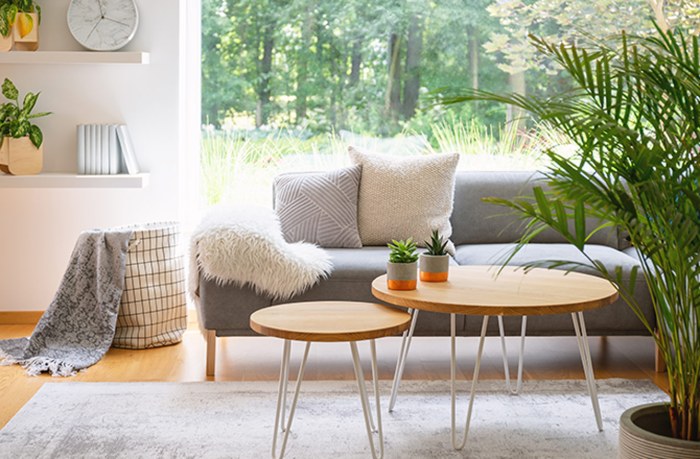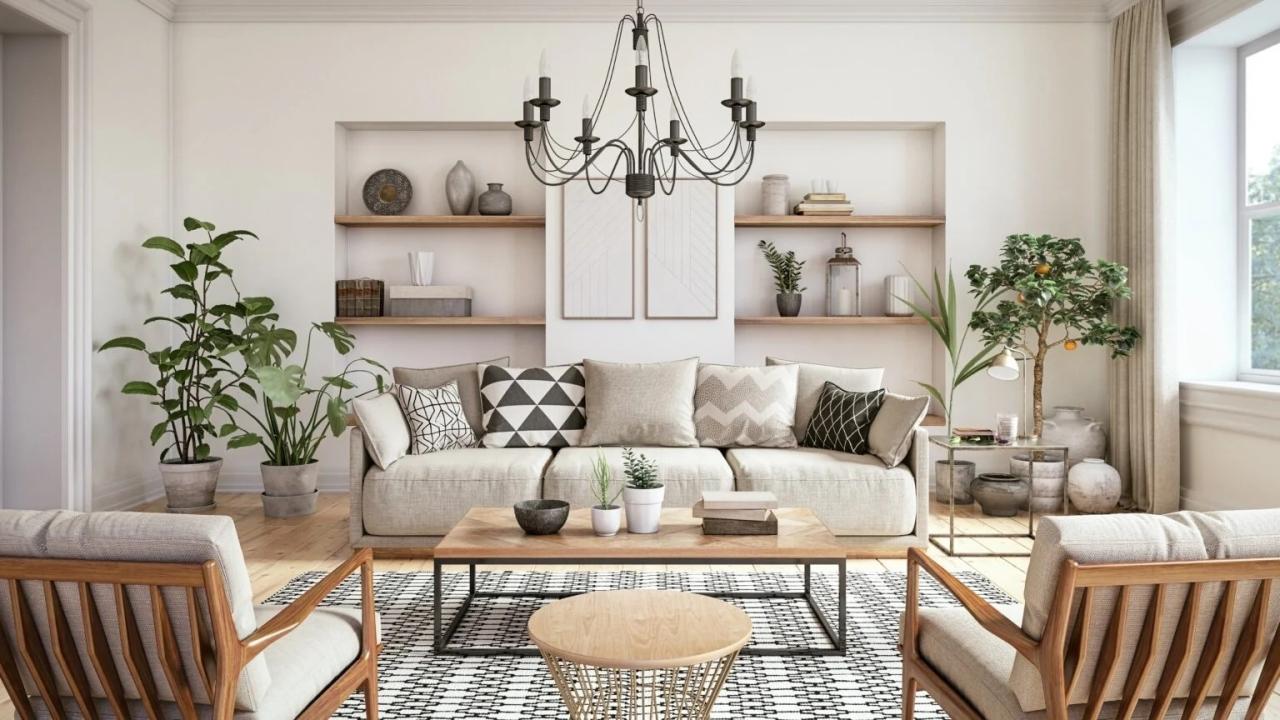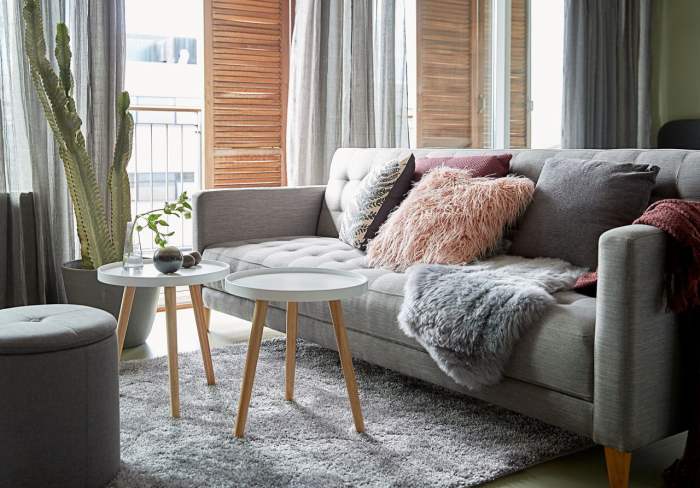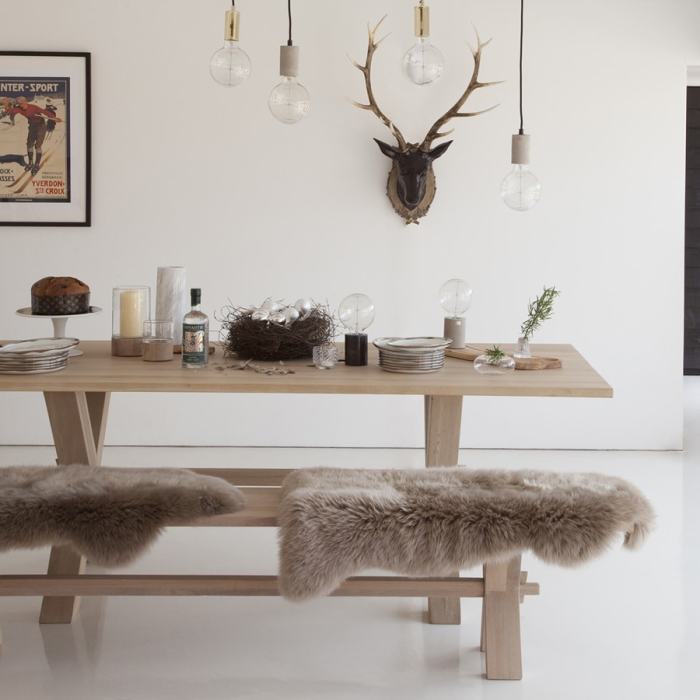Discover the captivating world of Hygge design, a Scandinavian aesthetic that prioritizes coziness, warmth, and simplicity. This guide delves into seven core principles, revealing how natural light, carefully chosen textures, and a minimalist approach create inviting and tranquil spaces. We’ll explore how to translate these principles into practical design choices for various rooms, from the living room to the bathroom, transforming your home into a sanctuary of calm and comfort.
Through detailed examples, practical tips, and insightful comparisons with other interior design styles, you’ll gain a comprehensive understanding of Hygge’s unique charm and learn how to effortlessly incorporate its elements into your own living space. Whether you’re a seasoned design enthusiast or a beginner, this guide offers a clear path to crafting a Hygge haven that reflects your personal style and fosters a sense of well-being.
Core Principles of Hygge Design

Hygge, a Danish concept encompassing coziness, comfort, and well-being, translates beautifully into interior design. It’s not just a style; it’s a feeling, achieved through careful consideration of light, texture, and a mindful approach to simplicity. The following seven principles encapsulate the essence of Hygge design, offering a pathway to creating a warm and inviting home.
Seven Key Principles of Hygge Design
Hygge design prioritizes creating a space that feels inherently comforting and relaxing. These seven principles, deeply rooted in Scandinavian aesthetics, work together to achieve this atmosphere. They focus on creating a sense of warmth, intimacy, and connection within the home.
- Natural Light: Maximizing natural light is paramount. Large windows, sheer curtains, and light-colored walls allow ample sunlight to flood the space, creating a bright and airy feel. Mirrors strategically placed can further enhance the effect.
- Warm Lighting: Soft, warm lighting is crucial for creating a cozy ambiance. Think candlelight, lamps with warm-toned bulbs, and fairy lights, all contributing to a calming atmosphere.
- Natural Materials: Incorporating natural materials like wood, wool, cotton, and linen adds texture and warmth. These materials bring a sense of the outdoors in, creating a connection to nature.
- Neutral Color Palette: Hygge design favors a neutral color palette, primarily using whites, creams, grays, and muted earth tones. These colors create a calming backdrop that allows textures and accessories to shine.
- Simplicity and Minimalism: Clutter is the enemy of Hygge. A minimalist approach, focusing on essential furniture and décor, promotes a sense of calm and spaciousness. Every item should have a purpose and contribute to the overall feeling of serenity.
- Texture and Comfort: Layering textures is key to creating a cozy atmosphere. Think soft throws, plush cushions, chunky knit blankets, and sheepskin rugs. These tactile elements add depth and warmth to the space.
- Personal Touches: While minimalism is important, personal touches are equally crucial. Incorporate items that hold sentimental value or reflect your personality. These elements add character and make the space feel truly your own.
Hygge Design in Different Room Types
The principles of Hygge design can be adapted to suit various rooms within the home.
Living Room: A living room designed with Hygge in mind would feature a comfortable sofa with plush cushions and throws, a warm-toned rug, ample natural light, and soft lighting from lamps and candles. A fireplace, if available, adds to the cozy ambiance. Minimalist décor, perhaps a few carefully chosen pieces of art or family photos, completes the look.
Bedroom: The bedroom should be a sanctuary of peace and relaxation. Natural materials like linen sheets and a wool blanket are essential. Soft lighting from a bedside lamp creates a calming atmosphere. Keep the décor minimal and calming, with perhaps a few plants to add life to the space.
Kitchen: Even the kitchen can embrace Hygge principles. Natural wood countertops and cabinets, combined with warm lighting and comfortable seating (if space allows), can create a welcoming space. Keep the countertops clutter-free, and incorporate natural elements like fresh flowers or herbs.
Hygge Design Mood Board
Imagine a mood board featuring the following elements:
Color Palette: A base of creamy white walls, accented with soft greys and muted greens. Touches of warm beige and natural wood tones add depth and warmth.
Materials: Samples of chunky knit wool, soft linen fabric, smooth oak wood, and a piece of sheepskin. These represent the natural textures crucial to Hygge design.
Accessories: A simple, ceramic vase with dried flowers, a few candles in various sizes, a cozy throw blanket, and a framed photograph of a peaceful landscape. These items represent the personal touches that add character and warmth.
Lighting: A depiction of soft, warm lighting emanating from a table lamp with a linen shade and flickering candlelight.
Comparison of Hygge Design with Other Styles
| Style | Color Palette | Materials | Key Features |
|---|---|---|---|
| Hygge | Whites, creams, greys, muted earth tones | Natural wood, wool, linen, cotton | Cozy, warm, inviting, minimalist, emphasis on natural light and texture |
| Minimalist | Neutral tones, often monochromatic | Clean lines, simple materials (often man-made) | Clean lines, functionality, lack of clutter, open space |
| Rustic | Warm browns, deep greens, natural tones | Reclaimed wood, stone, metal | Rough textures, aged finishes, vintage elements, handcrafted details |
Implementing Hygge Design in Different Spaces

Hygge, the Danish concept of coziness and well-being, isn’t confined to a specific room or style. Its principles of simplicity, natural light, and comfortable textures can be beautifully adapted to any space in your home, transforming it into a haven of warmth and tranquility. The key is to understand the core elements and apply them creatively to suit the unique function and size of each area.
Hygge in Small Living Spaces: Maximizing Comfort and Functionality
Creating a Hygge atmosphere in a small living space requires careful planning and a focus on multi-functional furniture. The goal is to maximize space without sacrificing comfort or style. Avoid clutter by choosing pieces that serve multiple purposes, such as a sofa bed or ottomans with storage. Light, neutral colors on the walls and furniture will help to make the space feel larger and airier. Incorporating mirrors strategically can also create the illusion of more space. Adding soft textures through throws, cushions, and rugs will enhance the cozy feel without overwhelming the room. A well-placed, warm-toned lamp can create a focal point and add to the inviting ambiance.
Hygge in the Bedroom: Creating a Cozy and Inviting Sanctuary
The bedroom is a space for relaxation and rejuvenation, making it ideal for implementing Hygge principles. Soft, natural materials like linen and cotton are essential for creating a calming atmosphere. Think of a plush rug underfoot, soft bedding in muted tones, and perhaps a sheepskin throw draped over the bed. Subdued lighting is crucial; consider a bedside lamp with a warm, soft glow, or string lights draped around the room for a magical touch. Avoid harsh overhead lighting. A calming color palette, such as soft blues, greens, or greys, will promote relaxation. Personal touches, such as framed photographs or cherished books, will add a sense of warmth and personality.
Hygge in the Kitchen: Functionality and Warmth Combined
The kitchen, often the heart of the home, can be transformed into a Hygge haven by focusing on functionality and warmth. Natural materials, such as wood countertops and woven placemats, add a rustic charm. Open shelving displays favorite mugs and cookbooks, adding a personal touch. Warm lighting, perhaps from pendant lights above the island or under-cabinet lighting, creates a welcoming atmosphere. Consider adding plants to bring life and freshness to the space. Choose comfortable seating, such as bar stools or a small breakfast nook, to encourage lingering and conversation. The overall goal is to create a space that feels inviting and comfortable, even while undertaking the practical tasks of food preparation and cooking.
Designing a Hygge-Inspired Bathroom: A Step-by-Step Guide
Creating a spa-like atmosphere in the bathroom is easily achieved using Hygge principles.
- Choose a calming color palette: Soft blues, greens, or grays create a serene atmosphere. Avoid harsh, bright colors.
- Incorporate natural materials: Use wood, stone, or bamboo for accessories and shelving. Consider a woven bathmat.
- Add soft textures: Fluffy towels, a plush bathrobe, and a comfortable rug enhance the feeling of luxury and comfort.
- Subdued lighting is key: Use dimmer switches to control the intensity of overhead lighting and add candles (real or battery-operated) for a relaxing ambiance. Consider installing soft, warm-toned LED strip lighting under the vanity.
- Introduce plants: A small plant or two adds life and freshness to the space.
- Minimize clutter: Keep the space clean and organized to promote relaxation.
Enhancing Hygge Ambiance with Lighting
Lighting plays a crucial role in creating a Hygge atmosphere. Natural light should be maximized during the day, with sheer curtains or blinds allowing soft light to filter through. In the evening, artificial lighting should be warm and inviting, mimicking the soft glow of candlelight. Avoid harsh overhead lighting; instead, opt for table lamps, floor lamps, and wall sconces with warm-toned bulbs (2700K-3000K). Consider using dimmer switches to control the intensity of the light, creating a flexible and relaxing environment. String lights can add a magical touch to any room, while candles (real or battery-operated) provide a warm and comforting glow. Strategic placement of light sources, focusing on creating pools of light rather than harsh, overall illumination, is essential for achieving a true Hygge ambiance. For instance, a floor lamp in a corner can create a cozy reading nook, while strategically placed wall sconces can highlight artwork or architectural details.
Materials, Textures, and Color Palettes in Hygge Design

Hygge design prioritizes natural materials and a muted color palette to create a warm, inviting, and calming atmosphere. The careful selection of textures and colors contributes significantly to the overall feeling of coziness and well-being associated with this style.
Common Materials in Hygge Design
Natural materials are fundamental to achieving the authentic Hygge aesthetic. These materials not only contribute to the visual appeal but also enhance the tactile experience, fostering a sense of comfort and connection with nature. The inherent qualities of these materials, such as their warmth, softness, or durability, further enhance the overall ambiance.
- Wood: Light-colored woods like pine, birch, and ash are prevalent, often left with a natural or lightly oiled finish to showcase their grain. Wood is used extensively in furniture, flooring, and wall paneling, contributing to a sense of warmth and grounding.
- Wool: Thick, chunky wool throws, blankets, and rugs add texture and warmth, inviting physical comfort and a feeling of security. The natural fibers of wool also contribute to a healthier indoor environment.
- Linen: Linen textiles, such as curtains, cushions, and bedding, introduce a sense of understated elegance and subtle texture. Their natural drape and breathable quality add to the overall relaxed atmosphere.
- Leather: Leather accents, such as armchairs or ottomans, bring a touch of durability and sophistication. The natural patina of leather adds character and visual interest over time.
- Cotton: Soft cotton fabrics are used in bedding, towels, and other textiles, providing a sense of comfort and ease. Natural cotton’s breathability and softness contribute to a relaxed atmosphere.
Hygge Color Palettes and Their Emotional Impact
The color palettes in Hygge design are generally muted and calming, reflecting the Scandinavian landscape and promoting a sense of tranquility. The colors chosen evoke feelings of serenity, comfort, and warmth, contributing to the overall atmosphere of relaxation.
- Neutrals: Off-whites, creams, greys, and beige form the foundation of most Hygge spaces. These colors create a sense of spaciousness and serenity, acting as a neutral backdrop for pops of color.
- Earthy Tones: Soft greens, blues, and browns are incorporated to bring in natural elements and create a sense of connection with the outdoors. These colors promote a sense of calm and stability.
- Muted Jewel Tones: Subdued shades of emerald, sapphire, and ruby can be used sparingly as accent colors, adding a touch of sophistication and depth without overwhelming the overall calmness.
Texture Interaction in Hygge Spaces
The layering of textures is crucial in creating a truly inviting Hygge space. The interplay of smooth and rough, soft and hard surfaces adds visual and tactile interest, enhancing the overall sensory experience.
For example, a smooth linen sofa might be complemented by a chunky wool throw, a rough-hewn wooden coffee table, and a soft sheepskin rug. This combination of textures creates a visually appealing and tactilely rich environment that invites relaxation and comfort.
Hygge-Inspired Living Room Design
Imagine a living room bathed in soft, natural light. The walls are painted in a warm, creamy off-white, providing a neutral backdrop. The flooring is made of light oak planks, contributing to a sense of warmth and natural beauty. A large, comfortable linen sofa in a soft grey sits against one wall, draped with a chunky knit wool throw in shades of cream and beige. An antique wooden coffee table with a slightly rough surface holds a collection of books and a ceramic vase filled with dried flowers. Two armchairs upholstered in a soft, muted green velvet sit opposite the sofa, adding a touch of elegance and comfort. A sheepskin rug is casually thrown over the oak floor near the fireplace, adding both warmth and texture. Soft, natural light filters through linen curtains, creating a serene atmosphere.
Hygge-Styled Centerpiece Design
The centerpiece consists of a low, rustic wooden bowl, its surface showing natural imperfections. Inside, a collection of smooth, grey river stones are arranged artfully. Nestled amongst the stones are several small, dried branches of eucalyptus, their muted green and grey tones contrasting subtly with the stones. A single, creamy white candle sits in the center of the arrangement, adding a soft glow and a sense of warmth and tranquility. The textures are a blend of the smooth stones, the rough wood, and the slightly textured eucalyptus leaves, creating a visually appealing and calming focal point.
Final Summary

By embracing the seven principles of Hygge design—simplicity, natural light, texture, warmth, comfort, functionality, and mindful curation—you can transform your home into a haven of tranquility and well-being. Remember, the essence of Hygge lies not in specific objects but in the creation of a cozy and inviting atmosphere that fosters a sense of contentment and connection. Experiment with different textures, colors, and lighting to discover your unique Hygge style and create a space that truly reflects your personality and promotes a sense of peace and relaxation.